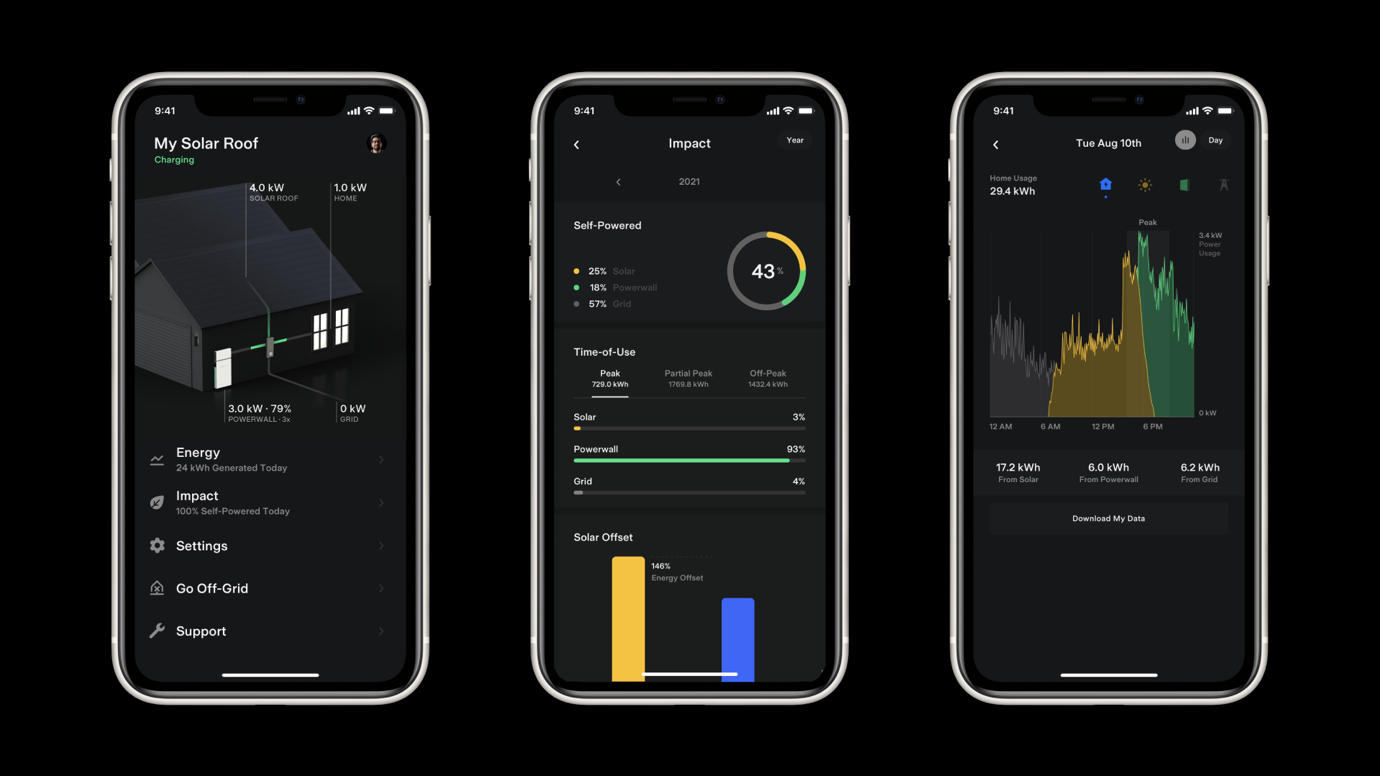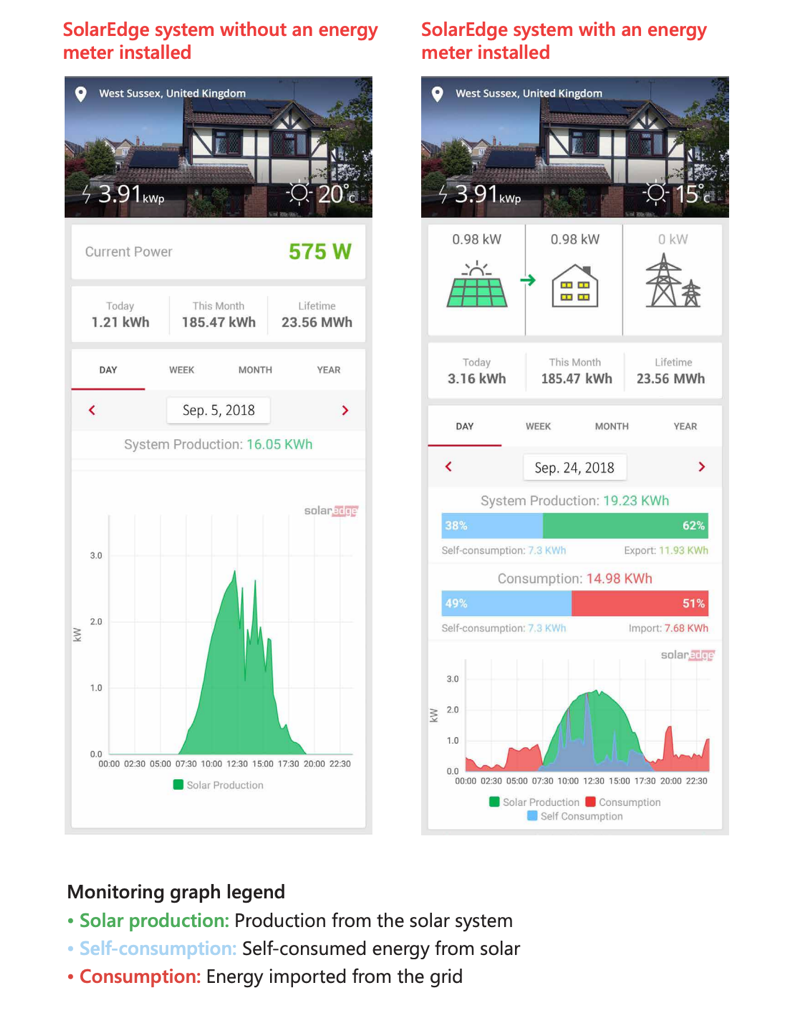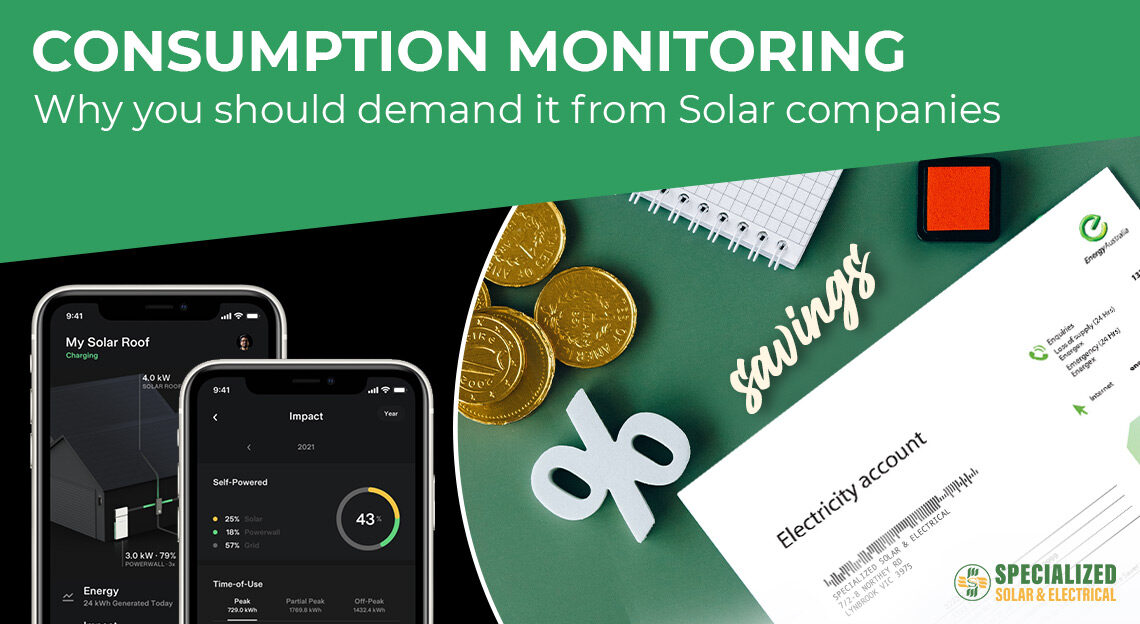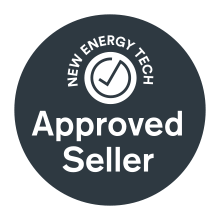You’re keen to get solar panels installed and excited about the prospect of getting your electricity bills down. But how will you know how much your system is saving you once it’s installed?
Knowing that your solar panels are generating electricity is a good start. And knowing how much electricity they’re producing is nice too.
That’s called solar generation monitoring and it’s included with every solar system. But the problem with solar generation monitoring is that it doesn’t tell you how much money you are saving off your electricity bills. It’s only half the picture (if that).
To know how much you’re saving with solar, you need consumption monitoring – and generally most solar companies don’t include it.
Consumption monitoring tells you what percentage of your household electricity requirements are being met with your own solar electricity – and what percentage of your electricity requirements are coming from the grid.
This is the key statistic to know. The higher the percentage of solar electricity used in your home, the bigger your bill savings.
It’s that simple!
At Specialized Solar & Electrical we believe so strongly in the benefits of consumption monitoring that we include it as standard with every solar panel system we install.
On this blog:
- The secret to saving with solar
- What is consumption monitoring?
- What type of graphs do I get with consumption monitoring?
- What are the benefits of consumption monitoring?
- Are there any drawbacks with consumption monitoring?
The secret to saving with solar
The secret to saving with solar is to minimise the amount of electricity you buy from the grid and maximise the amount of your self-produced solar electricity that’s used in your home.
Ten years ago, it was a different story. Anyone with solar wanted to export as much of their solar electricity as possible to the grid. That’s because they’d get paid 60 cents per kilowatt hour (or more) for the feed-in tariff – which was around double the cost of buying it from the grid.
Now it’s the reverse.
The solar feed-in tariff has dropped to new lows – 5.2 cents per kilowatt is the mandated minimum feed-in tariff in Victoria from July 1, 2022. There’s no real money to be made from the solar feed-in anymore – although you can shop around for a slightly better rate but just careful the electricity retailer doesn’t charge you over the odds for the general usage tariff or daily supply charge.
These days with solar, it’s not about making money from the feed-in tariff – instead it’s about saving it by buying less electricity from the grid.
Grid electricity is expensive, and about to become even more costly. The average price of grid electricity in Australia is around 27 cents per kilowatt hour. Due to turmoil in domestic and international energy markets, grid electricity in Australia is predicted to increase by around 20 per cent in the next 12 months. If that happens, electricity rates will increase to around 32 cents per kilowatt hour (on average) for Australian homes.
So, the main point is:
If you have an Aussie home with solar panels and you’re on the standard solar feed-in tariff, the BEST way to save money off your electricity bill is to do two things:
- use as little as possible electricity from the grid.
- use as much electricity as possible from your solar power system.
What is consumption monitoring?
A consumption monitoring device – also referred to as a smart meter or advanced monitoring system – monitors the consumption of electricity in your home. It shows you how much of your solar electricity you use in your home, and how much electricity is from the grid.
A consumption monitor is a small unit that is fitted in your switchboard and connected to your solar inverter. It does not replace the energy meter that is installed by your electricity retailer.

You access the data from the consumption monitoring device on your smart phone or a computer connected to the internet. Using an app, you access a dashboard with graphs showing different aspects your electricity usage.
What type of graphs do I get with consumption monitoring?
An example of the type of graphs you get with consumption monitoring are shown below.
We particularly like these set of graphs because they show the two most important pieces of information every solar owner needs to know:
1. System production
This tells you how much solar electricity has been produced and, of that, what percentage was used in your home and what percentage was sent to the grid.
On the graph below, system production for a one week period was 214.98 kWh and, of that, 30 per cent (63.74 kWh) was used in the home and 151.23 kWh (70 per cent) was exported to the grid.
2. Consumption
This tells you how much electricity in total was used in your home and, of that, the split between grid electricity and your own solar electricity.
On the graph below, the home consumed a total of 164.41 kWh of electricity in one week. 39 per cent of that electricity (63.75 kWh) was from the solar system, the remainder was from the grid.

What are the benefits of consumption monitoring?
The main benefits of consumption monitoring are:
- Monitor your household electricity self-consumption ratio for any period. This is the key statistic to watch if you’re serious about reducing your electricity bill. You should be aiming for at least 50 per cent self-consumption of your solar electricity, ideally higher.
- Put in your electricity tariff and see what your grid power is costing you, and how much you’re saving with solar.
- Identify which electrical appliances and devices consume the most power, and when.
- Divert more of your excess solar electricity to other electrical appliances around your home.
- Better educate yourself and your family members about electricity usage in your home.
- Identify how much you could save by installing a solar battery.
- Includes built-in export limiting (useful if you need it).
Are there any drawbacks with consumption monitoring?
The main point to know about consumption monitoring is that the device needs some space in your switchboard. If you have a single-phase home, you need one pole in the switchboard. If you have a three-phase property, you’ll need three poles and, with some brands of consumption monitoring devices, as much as six poles. For most homes, this won’t be an issue but we’ll ask you to provide a photo of your switchboard to check there’s room.
The other drawback is that consumption monitoring costs a little extra but at Specialized Solar we include it in our prices and install it on the same day as the solar panel system.
Find out more
If you’re thinking about installing solar and you’re interested in consumption monitoring as well, we’re the people to talk to! All our solar panel systems come with industry-leading consumption monitoring that’s easy and intuitive to use. Just ask us for a quick tour of the consumption monitoring dashboard and we’ll be more than happy to show you.
And if you’ve already got solar but you’d like consumption monitoring, we can help with that too.
Get the information you need to maximise your savings with solar. Get in touch with us today!












